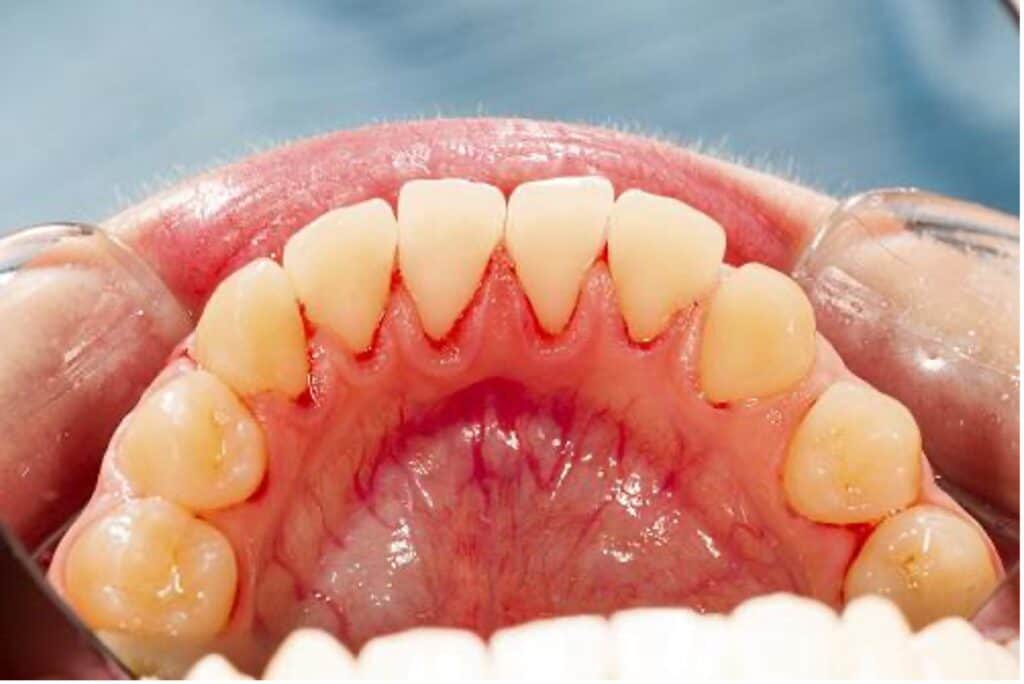Gum disease occurs as a result of a bacterial infection in your mouth. The bacteria cause the gums to become irritated and inflamed. The swollen tissue eventually begins to pull away from your teeth, causing pockets to form. Bacteria become trapped below the gum line and continue attacking the tissue from inside. Over time, the pockets grow deeper, and the bacteria reach your periodontal ligaments and your jawbone. They begin attacking these supporting structures, causing the formation of bony defects. These defects in the bone provide hiding places for bacteria and can make gum disease treatment more difficult. Karl Zeren DDS can help to treat gum disease and restore your oral health with osseous surgery.
Scaling And Root Planing
Scaling and root planing is a very common treatment for gum disease. It is sort of deep cleaning for your teeth. Scaling is the cleaning of the visible surfaces of your teeth. Using a specialized tool called a scaler, we can eliminate even the most stubborn debris. All visible surfaces of your teeth are cleaned, with special attention given to the gum line and just below it. Root planing is the process of cleaning the root surfaces of your teeth. Small tools are inserted below the gum line to smooth away plaque and bacteria. By smoothing the surfaces of your roots, it becomes more difficult for new bacteria to adhere. With buildup gone, the irritation is eliminated, and your gums can begin healing.
What If The Periodontal Pockets Are Too Deep?
The longer gum disease goes untreated, the deeper the periodontal pockets become. If the pockets are too deep, scaling and root planing may not be effective. Our tools will not be able to reach to the bottom of the pockets. If your teeth are not thoroughly cleaned, gum disease can continue to advance, despite having received treatment.
In the case of deep periodontal pockets, pocket reduction surgery may be recommended. This process involves incisions in the gums to gain access to the roots of the teeth. We are then able to effectively clean your teeth. After suturing your gums closed, the tissue can begin to heal.
What Is Osseous Surgery?
If the bacteria below your gums have begun to attack your periodontal ligaments and your jawbone, they can cause the formation of bony defects. These are regions of bone loss. Bony defects provide hiding places for bacteria. Even with pocket reduction surgery, gum disease can continue to progress. If your jawbone has bony defects, you may be recommended for osseous surgery.
Osseous surgery may be performed in conjunction with pocket reduction surgery. Incisions in your gums provide us with access to the roots of your teeth and surrounding jawbone. We then smooth the bone to eliminate bony defects and thoroughly clean the bone and your teeth. After your gums have been sutured closed, the tissue can begin to reattach to the bone and your teeth.
The Benefits Of Osseous Surgery
Osseous surgery provides many benefits. These benefits include:
- Eliminating hiding places for bacteria.
- Your gums can begin to reattach to your bone.
- Periodontal pocket depths are reduced.
- Oral hygiene is made easier.
- Improved oral health.
- An improved smile.
With osseous surgery, we can smooth out the bony defects in your jawbone to eliminate hiding places for bacteria so that your mouth can heal properly.






